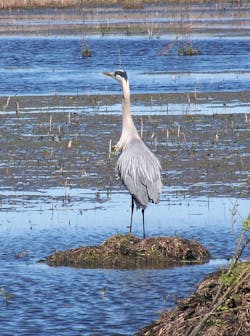A Vermont ski resort has agreed to pay $80,000 for wetlands violations to settle claims by the U.S. Environmental Protection Agency (EPA) that it violated the federal Clean Water Act when it filled in about two acres of wetlands and streams and failed to obtain proper permits from the U.S. Army Corps of Engineers (Corps).
According to EPA, a construction company working for Jay Peak Resort Inc. placed dirt, sand and rocks into numerous wetlands and streams, affecting more than two acres of wetlands and streams during construction of its golf course between 2004 and 2006 without a required permit.
This case was brought to the attention of EPA by the Corps in the spring of 2008. Since then, the Corps and EPA have worked together in pursuing this case.
EPA issued Jay Peak Resort a compliance order in September 2010, requiring that the company restore the affected wetlands and streams. The company worked cooperatively with EPA and the Corps in complying with the order restoring the wetlands and streams prior to the deadlines established in the order. Jay Peak Resort was directed to apply for after-the-fact authorization from the Corps to retain certain areas of fill that appeared to be critical to the project.
The affected streams on the site flow into Jay Branch Brook, which flows into the Missisiquoi River and then into Lake Champlain.
Wetlands provide valuable habitat for many species of wildlife. They also help to protect the health and safety of people and their communities. They filter and clean water by trapping sediments and removing pollutants, and they provide buffers against floods by storing flood water. Wetlands also store and slowly release water over time, helping to maintain water flow in streams, especially during dry periods.
“Filling wetlands can exacerbate flooding,” EPA Regional Administrator Curt Spalding said. “Recent flooding in parts of Vermont underscores how devastating floods can be. Wetlands can help reduce the impact of flooding, because they act like sponges and can reduce the effects that heavy rain storms have on the surrounding communities.”
Source: EPA


